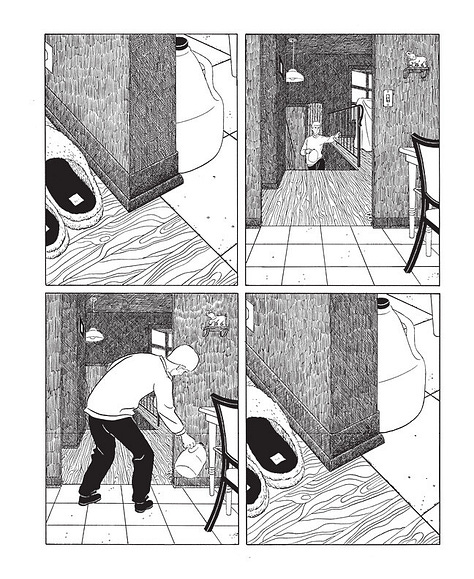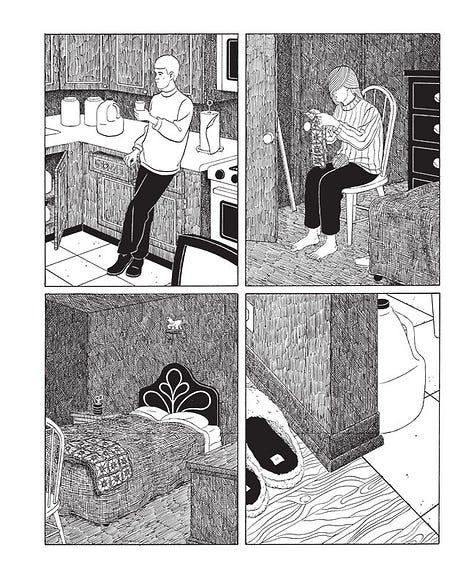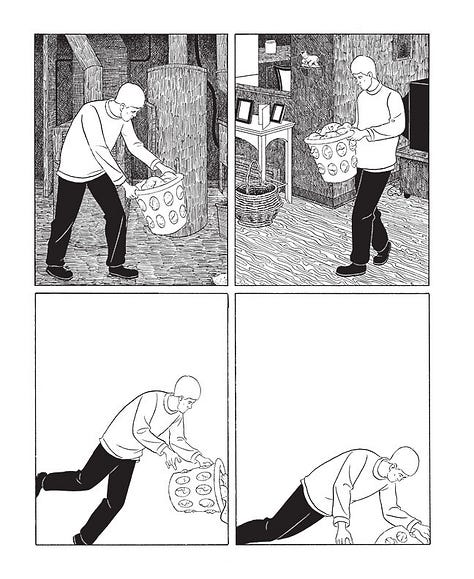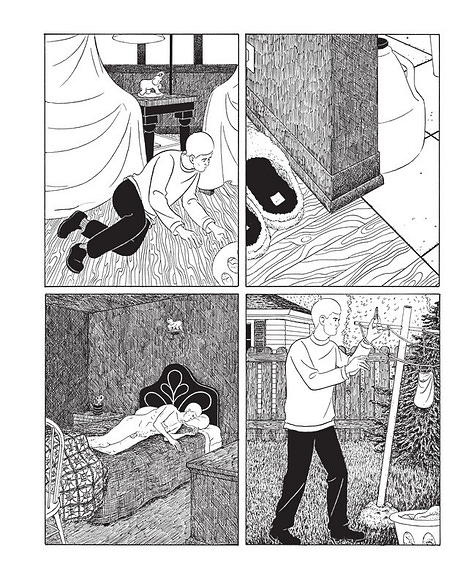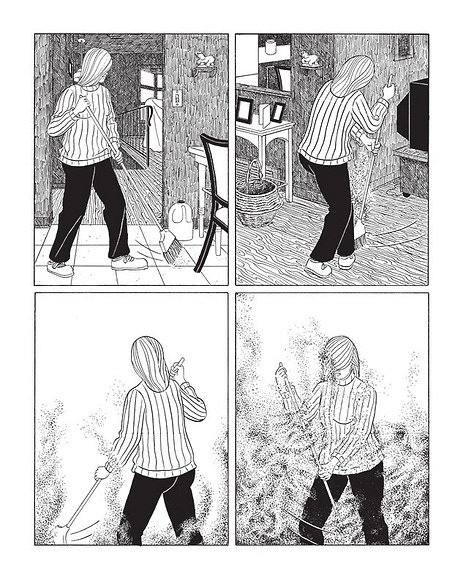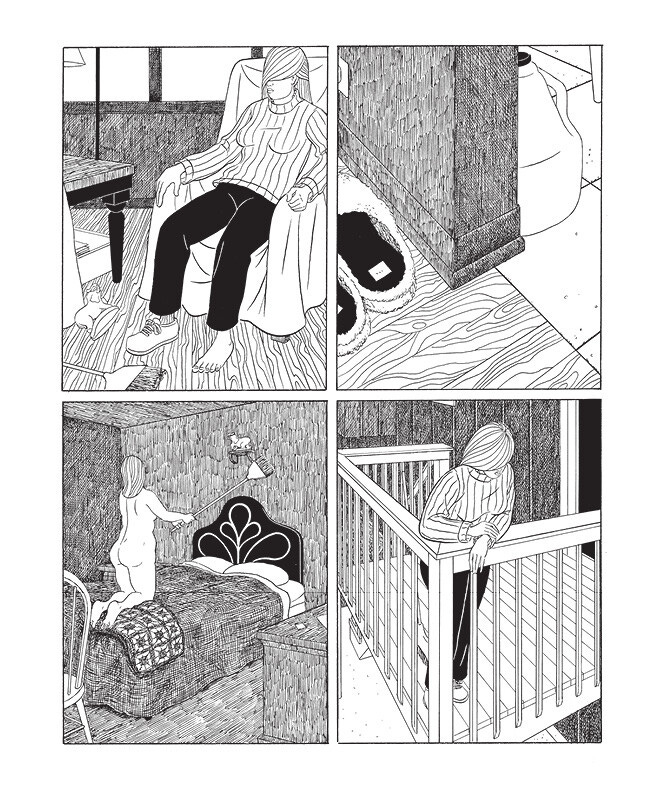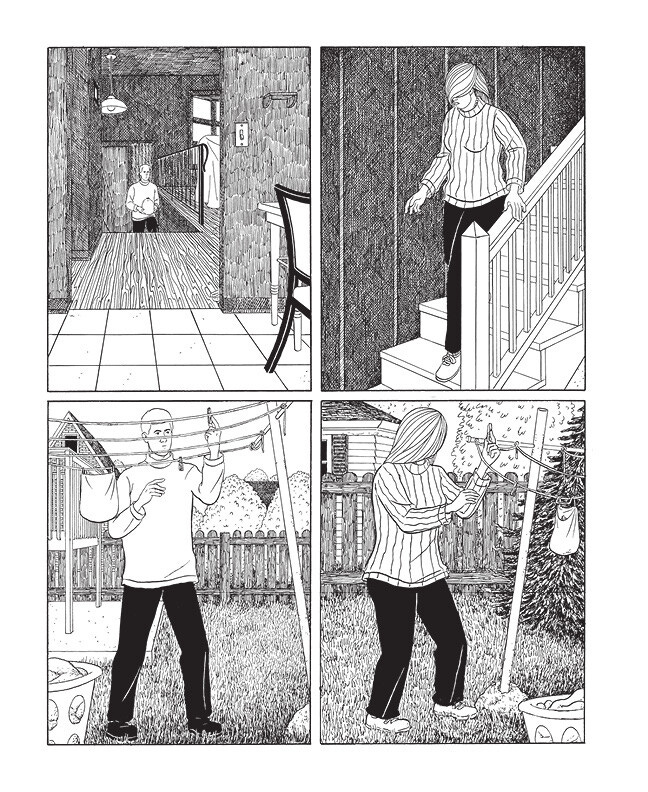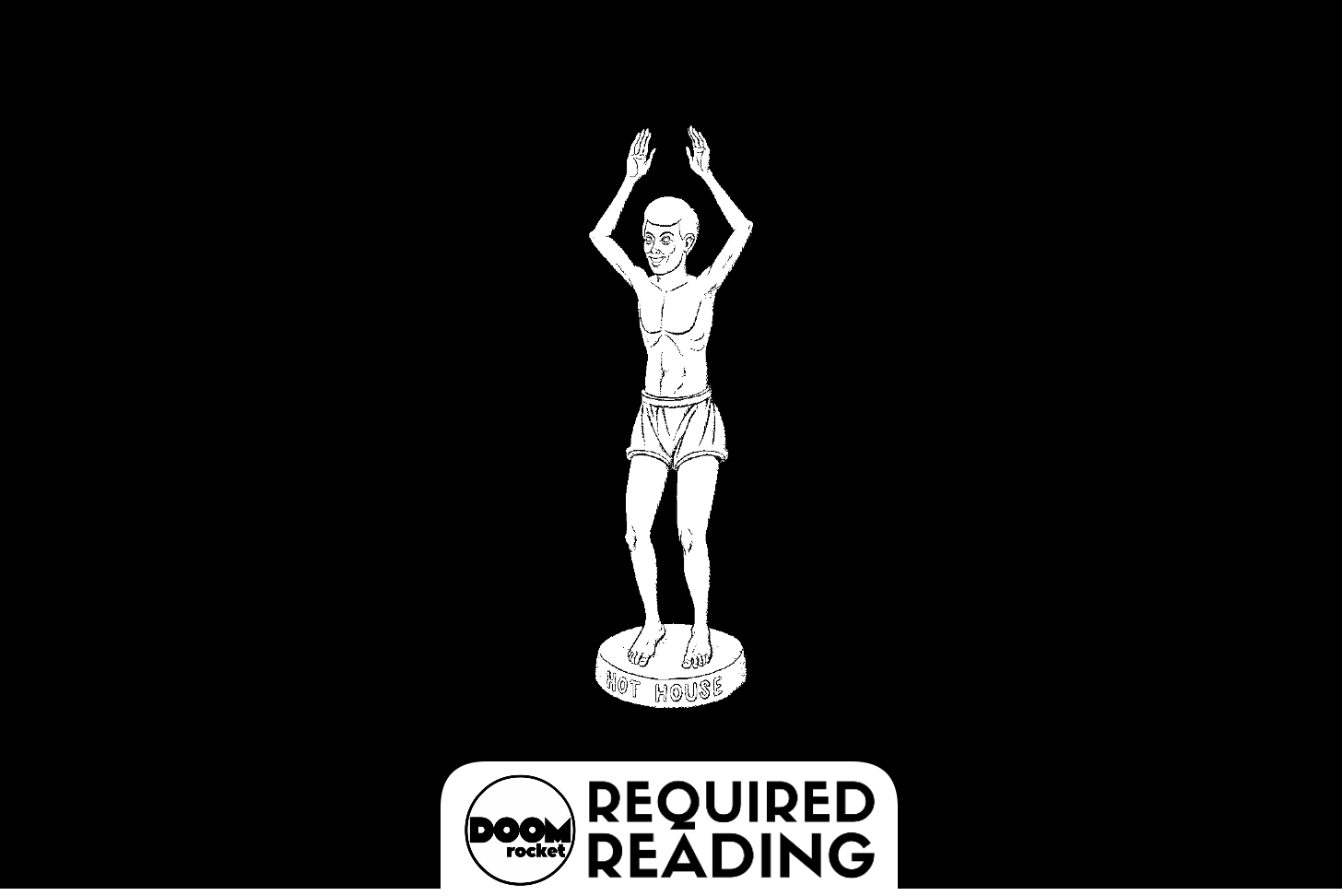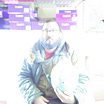Hot House is a surreal ballet of visual noise
Yet John Hankiewicz doesn't obscure his meaning.
Required Reading is DoomRocket's love chest, opened once a month to champion a book that we adore and you should read. The latest: John Hankiewicz's Hot House, from Fieldmouse Press.
The texture of Hot House smothers, covering the page, girding the eye. The bedroom has a phantom weight, pressing down on your vision with the time John Hankiewicz has spent hand-working each surface with detail — whole panel, top to bottom, and into all four corners. Yet the setting itself is mundane: a normal house, backyard, plain and familiar rooms, domestic liminal space. The visible effort says look at me and the bare walls say there’s nothing here. The people are unembellished. Holes cut through the fog.
Following these characters as they perform their daily rituals, the intense detail of Hankiewicz's linework translates into robust visual noise. As the moves repeat themselves, a new noise spreads across the panels, a textural abstract distortion transcending reality. An erasure that serves as a signal to the reader more than a substance the characters encounter. Visually, it has more in common with the roof than the people who live under it. A dense, all-consuming cloud of negation floods the vision. The signal dissolves into static, and still people are the thing that’s out of place. Ghosts that texture can’t touch.
The repetition of scenes twists around themselves as they duplicate. This imagery gives Hot House a filmic quality, with forms presented and re-presented in altered states over time. Arthouse. But more, it evokes music’s melody modulating. The blanket of distortion that comes and goes is feedback drowning out how the song is supposed to sound. Its visual conveyance of a musical idea and its reliance on bodies striking specific poses is also quite like ballet. Hot House is dancing.
What exactly is happening is hard to say. In a documentary sense, it’s surreal but clear (discounting the fog, of course). Hanging laundry on the line, going down the stairs, cleaning, lying in bed. The bottom piece of the frame comes loose, and the picture slips out and hits the floor. The distorted creature, naked, chased through the house and flailing. A broken branch dangles. Ill omens become deafening echoes in the cavernous absence of normality radiating from these everyday objects and events.
What is happening is opaque. The progression of events and their repetition and mutation, the cause and effect that drives the story forward, has been wired all wrong. Bodies move through space in a manner familiar to the reader yet alien and unfathomable. Like Peter Chung, the Aeon Flux short with the elevator and the base that sinks, told in a cycle of fixed angles. What began as a novel play on memory becomes a trap, a tragedy. But instead of stylized genre fiction, Hot House is Buñel walking through the garden: obscene, absurd, obscured.
Jim Woodring but Dancer in the Dark. A visual story incomprehensible and familiar. What seems like an innocent, everyday act is secretly a performance, somewhere between a cartoon and a rite. Fairy tale logic pervades; mundane actions have incongruously severe consequences. Absent is the Ub Iwerks veneer; instead, the look lands more magical realism cinéma vérité, like some suburban white-collar prison. There’s a kind of foreboding tension that reminds me of the anti-establishment outsider art comics from the RISD scene a few decades back: signs of technical training and recognition, elements in direct opposition to formal standards. It draws comparison to the Alt-Weekly intercourse of art and work, the look of the draftsman. Professional illustrators who learned the rules they break. It’s so normal and correct that the known is immediately rendered uncanny, the unknown tumbling into horror.
You’ve never read a comic one panel at a time like this before. Each square is a complete story beat. Every beat has a dancer striking a symbolic pose. Every pose, every single one, is drawn from a specifically considered perspective. It should be a symbolic storyboard, with the reader being led through the storyteller’s vision. Yet, the static ballet is composed so that each panel is arranged with meaning. You don’t move past it to get the message; the camera angle and the blocking are the story.
A kind of poetry that is the rhythm of comics, raw. There’s no textual representation for the distortion that obscures the page (though I suppose there’s the visual poetry of radical typography that fights clarity to acquire interest). Nor are there words to describe the meaning to the audience looking at the same thing from a different angle. The arrangement of images and the changing meaning they hold in their repetition and variation is poetry. Like the word puzzles psychic agents play in Alfred Bester’s early 50s novel The Demolished Man. The structure of the words on the page repositions their meaning at distances that vary from reader to reader.
The critic’s dilemma is that, surely, the imagery of domesticity is selected intentionally as every other aspect of the read is painstakingly arranged. But why would you pick apart the insides of a story so clearly focused on evoking reactions inside its reader? Let me then ride it through into darkness. Instead of searching for meaning, let Hot House swallow me up and disintegrate.
Hot House is available now. For purchasing info, click this.
Fieldmouse Press / $24.95
Written and illustrated by John Hankiewicz.
Check out this 8-page preview of Hot House, courtesy of Fieldmouse Press:
